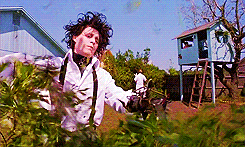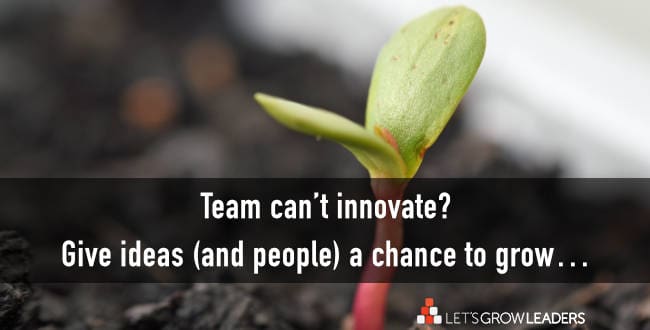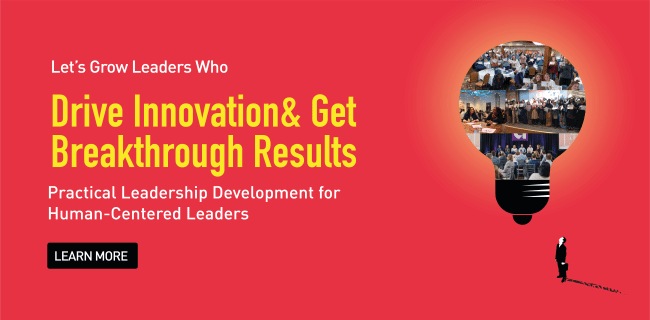When Your Team Can’t Innovate It May Be Because of Your “Help”
New ideas have a life cycle. Many senior leaders jump in to help their teams refine, grow, or prune an idea before they’re ready – and as a result, their teams can’t innovate at all.
Idea Killer?
I have a confession to make.
I’ve been an idea-killer.
It’s not that I don’t want new ideas, solutions, and innovation. I didn’t callously shout “that’s not how we do it!” No, my problem was different.
It came from trying to help in the wrong way at the wrong time. Someone would bring me an idea and I’d jump in with all the possibilities. The three distinct problems we’d need to solve. How we had similar solutions already in place. Most of the time, that was the end of the idea.
And I know I’m not alone. Many leaders and managers, in their desire to be helpful, show off their vast knowledge, or shortcut to a faster solution, will give quick answers when team members ponder “what-ifs.” I’ve done this more times than I care to admit.
How Well-Meaning Leaders Extinguish Ideas When Teams Can’t Innovate
As we work with leadership teams to help them build a Courageous Culture filled with teams of innovators, problem-solvers, and customer advocates, we’ll often hear that their teams won’t solve problems on their own and lack creativity.
When you watch what happens in these organizations, people will often have ideas—and then senior leaders swarm that seedling of an idea and pick it apart, tell the team what they’d missed, and what’s already happening. The swarm of input crushes the idea and spirit behind it before the team can learn more or experience the joy of innovation.
And I get it—from an experienced leadership perspective, you want to help. There are five different perspectives you’ve learned through your experience that are relevant and that the team hasn’t considered. You can see the potential in version 3.0 of their idea, and you jump to that, asking if they’ve considered incorporating x, y, and z. You’re also sensitive to time—after all time is money and if you can shorten the learning curve and get to a better idea, faster, doesn’t it make sense to get there as quickly as possible?
Not necessarily.
Or at least, not now.
When Your Team Can’t Innovate—Pay Attention to Idea Life-Cycle
When your team’s new ideas meet with a flurry of input, criticism, or overwhelming additions, they can’t innovate. The new idea drowns before it can grow. And people give up—it’s just not worth it to try.
Think of ideas like an apple tree. When the seed first sprouts, that tiny seedling needs enough room to grow, put out a few leaves, and get some roots down to anchor it in the soil. It wouldn’t make sense for you to prune or shape a seedling or look for apples. It’s not ready yet.

Give that tiny seedling time to grow, however, and it will develop strength as it faces wind and rain. Eventually, it will be big enough and strong enough that you can shape it and prune it—and doing so will make it healthier and help it produce more apples.
Nurture the Birth of Ideas
Your team and their ideas have a similar life cycle.
When your team can’t innovate, pay attention to what happens in the early stages of ideation. Is there room to explore and grow an idea? Can they experiment and try ideas at a small scale to see what works, what they hadn’t considered, and how to get the information they need to contribute better solutions? To make mistakes that won’t cripple the business, but that help people learn and grow?
Real learning grasps the essential elements, understands “what happens if,” makes new connections, finds new solutions, and creates new visions. Be careful not to squelch creativity and risk-taking by trying to help too much or jumping ahead too soon.
Recently I interviewed Olankunle Soriyan, author of A Love Affair with Failure, and he captured this tendency to paralyze ourselves or our teams by focusing on perfection before we’re in motion. “If you wait to release an iPhone 14 and all the features it has today, you’ll never release the first edition.”
“If you wait to release an iPhone 14 and all the features it has today, you’ll never release the first edition.”
-Olankunle Soriyan, A Love Affair with Failure
How to Help When Your Team Can’t Innovate
Here are three strategies to help nurture new ideas and people who are learning how to innovate:
- Provide context and clear criteria
When someone on your team has an idea, they likely are thinking only of what the world looks like from their perspective. Help them grow and make it more likely their idea can have a meaningful impact by sharing context and clear criteria. What is happening in the organization, the environment, or the industry that they need to be aware of? What are the boundaries within which they can play as they implement their idea? Where do you or the organization most need a good idea?
One of the most powerful ways to equip your team with criteria to help them contribute meaningful ideas is with our I.D.E.A. model. What makes an idea interesting? Doable? Engaging to stakeholders? And what are the next specific actions they recommend?
Learn more about the I.D.E.A. model here.
- Respond with Regard
How you react to incomplete, unusable, or half-thought-through ideas has a huge effect on whether you’ll ever get useful ideas. When your team can’t innovate, pay attention to your response to the ideas you hear.
Start with gratitude for the act of contributing. For example: “Thank you for thinking about how we can improve in this area.” Note: You are NOT thanking them for their specific idea or even telling them it’s a good idea. Celebrate their effort.
Next, add information – this might be additional criteria, context, or even how their the idea is already in use. Give them enough information that they can continue exploring, growing, and making connections, but not enough to drown them. (Think of that apple tree seedling – it needs water to grow, but not too much.) If their idea can’t work right now, this is the time to let them know why.
Finally, invite them to continue thinking, contributing, and to refine this idea. This is critical to give people the same chance to learn and grow that made you the expert you are today. As they gain experience and think through their concepts, they’ll gain strength and be ready for the pruning and shaping stage of innovation.
Here’s more on how to: Respond with Regard
- Reward Failure
This may sound strange, but let’s think about the concept of rewarding failure for a moment.
If your people take a risk, but you only reward the risks that succeed, what will happen?
People will naturally stop taking risks.
By their very nature, risks mean uncertainty of success. By only rewarding the risks that work out as hoped, you communicate that you don’t actually want creativity and innovation; you communicate that you’re only interested in a “sure thing.”
Avoiding loss is human nature. Most people in your organization will therefore choose to do nothing, rather than risk your censure for a creative idea that doesn’t work.
The solution to this problem is to reward behaviors and attempts. Some organizations take this concept to a grand conclusion and annually give an award for “The best idea that didn’t work.” Others describe every new initiative as “an experiment” – a term that clearly communicates the desire to learn from the effort and acknowledges the reality that it may or may not work out as intended.
Your Turn
When your team can’t innovate, but you really want new ideas, make it safe to experiment and take risks. Avoid the temptation to swarm a new idea with too many corrections and criticisms. When you celebrate creative behaviors, attempts, and even failures, you make it OK for the effort to not work and for everyone to learn something along the way—and you’re that much closer to the game-changing ideas you do need!
I’d love to hear from you: what’s your most effective way to help new ideas thrive?








0 Comments